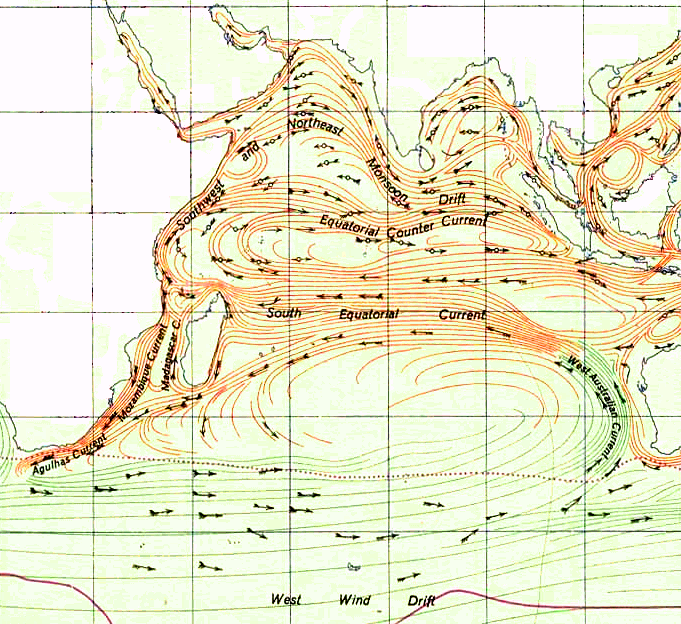The Somali Current is a cold ocean boundary current that runs along the coast of Somalia and Oman in the Western Indian Ocean and is analogous to the Gulf Stream in the Atlantic Ocean.[1] This current is heavily influenced by the monsoons and is the only major upwelling system that occurs on a western boundary of an ocean. The water that is upwelled by the current merges with another upwelling system, creating one of the most productive ecosystems in the ocean.[2]
The Somali current is characterized by seasonal changes influenced by the Southwest monsoon and the Northeast Monsoon. During the months of June to September, the warm Southwest monsoon moves the coastal waters northeastward, creating coastal upwelling. The upwelled water is carried offshore by Ekman transport and merges with water that was brought to the surface by open-ocean upwelling. The Somali Jet, aka. the Findlater Jet, a narrow low-level, atmospheric jet, also develops during the Southwest monsoon, and blows diagonally across the Indian Ocean, parallel to the coasts of Somalia and Oman. As a result, an Ekman transport is created to the right of the wind. At the center of the jet, the transport is maximum and decreases to the right and left with increasing distance. To the left of the jet center, there is less water movement toward the center than is leaving, creating a divergence in the upper layer and resulting in an upwelling event (Ekman suction). In contrast, to the right of the center of the jet, more water is coming from the center than is leaving, creating a downwelling event (Ekman pumping). This open-ocean upwelling in combination with the coastal upwelling causes a massive upwelling.[1]
- ^ a b McCreary, J.P.; Kohler, K.E.; Hood, R.R.; Olson, D.B. (1996). "A four compartment ecosystem model of biological activity in the Arabian Sea". Progress in Oceanography. 37 (3): 193–240. Bibcode:1996PrOce..37..193M. doi:10.1016/s0079-6611(96)00005-5.
- ^ Mann, K.H., Lazier, J.R.N. (2006) "Dynamics of marine ecosystems: biological-physical interactions in the oceans." Oxford: Blackwell Publishing Ltd. ISBN 1-4051-1118-6
